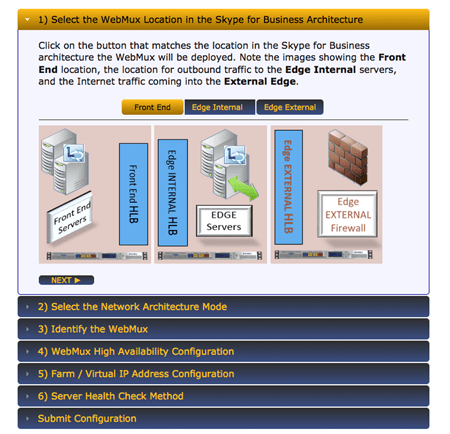AVANU webmux Server Load Balancing Functionality
Local Traffic Managers
AVANU load balancers perform as local traffic managers offering more than just a network-centric viewpoint. Residing outside of the application back end servers they can load balance with a variety ofnetworking techniques rather than administrators digging deep into the code of the application.
There is a clear distinction between the physical server and the application residing on the server, further allowing a single physical to host a variety of applications.
TCP Connection Management Most of the time, the load balancer acts as a full TCP proxy sitting in the middle of two distinct TCP connections: client and server side connections. The server terminates the TCP sessions which enables it to carry out any client side and server side TCP enhancements.
At the front end we can carry out TCP optimization technique to make use of entire available bandwidth.At the back end, techniques such as TCP multiplexing are employed to further improve application performance.
Load balancers act as full proxies enabling you to inspect, encrypt, or decrypt all traffic. It traverses to your network enabling intelligent traffic management. They act in a unique position to make every connecting client and server connection work more efficiently; improving application performance and user experience.
AVANU Load Balancing Topology Modes
All AVANU models feature the following load balancing topologies:
1. NAT Mode
2. Transparent Mode
3. Single Network Mode
The choice of topology is usually depicted in what the environment is currently in place or planned. If the farm virtual IP address is on a different network from the servers then choose the following NAT mode.
NAT mode
Destination NAT is performed between the main network and the segment containing the servers. Theoriginal client IP is preserved useful for logging purposes.
The WebMux behaves like a smart router performing load balancing algorithms sitting between twodifferent subnets. The server and farm IP are on different networks.
The WebMux must complete the transaction between the original client and server; return traffic mustflow through it. As a result it could involve network changes on the server side.
It is significantly useful for scenarios where you want the load balancing device to perform like a Firewall. NAT mode provides security for isolating servers from other parts of the network. The WebMux can firewall all uncofigured Ports, adding another layer of security.
Transparent Mode
With Transparent mode, no NAT is performed. The original client IP is preserved. The WebMux acts similar to an Ethernet Bridge and sits between two physical segments creating one single logical segment.
In Transparent mode, the servers reside “behind†the WebMux but are effectively in the same network as the server “in front of†the WebMux.
Any traffic related to load balancing is load balanced, any traffic not related to load balance can go through WebMux like a piece of network cable – transparently.
All servers can have an external IP address, whereas in NAT mode they must have internal IP addresses.
Transparent mode does not offer firewall protection. All servers can talk to each other freely across the WebMux.
One of its main benefits is the ease of deployment without the need to change any server or gateway IP addresses. It is useful for scenarios where you cannot make any logical network changes.
Single Network Mode (Plug and Play)
Source NAT is performed with Single Network Mode. The original client IP is replaced but additional MIME Header is used for client IP preservation. Server and farm IP are on the same network.
The WebMux acts like a proxy and all traffic appears to come from it. Physical port onding is available for additional throughput. Servers remain unmodified and can still use the existing gateway; return traffic will naturally flow via the WebMux as the server see the WebMux as the one making the request.
In this mode, the firewall protection gets disabled from the WebMux. All servers can talk to each other freely across the WebMux. Load balancing occurs when the farm IP is accessed. Single Network Mode is useful for plug and play scenarios.
To know more visit us:
network traffic manager, Server Load Balancing balancers , Network Load Balancing Methods , Application Delivery Network ,




